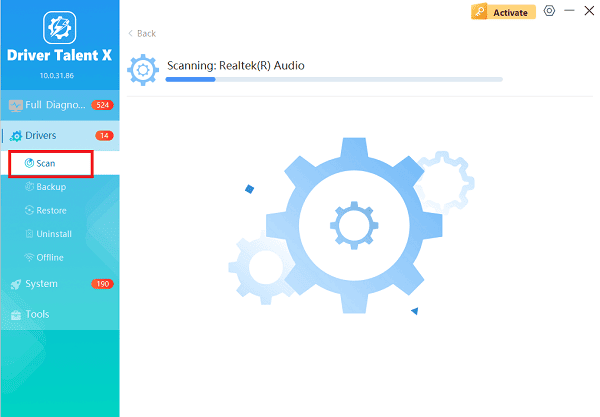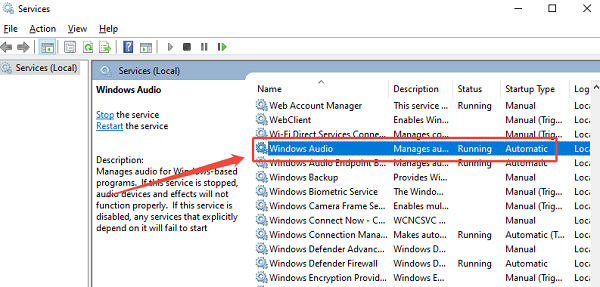If you are experiencing sound issues on your HP laptop or desktop (such as no audio output, crackling sounds, or the volume icon showing a red 'X'), the problem is most likely rooted in a corrupted, outdated, or conflicting audio driver. These issues frequently arise after major Windows updates or system changes.
To quickly restore stable audio to your HP PC, this guide provides a systematic, step-by-step approach to troubleshooting and fixing the problem, beginning with the most effective solution: ensuring your audio drivers are perfectly stable.
Part I: Driver and Software Integrity
For HP PCs, sound functionality depends on the core driver (often Realtek or Conexant) communicating correctly with the Windows audio service and the HP hardware. Conflicts here cause complete silence.
Method 1: Automated Driver Update with Driver Talent X
Manually troubleshooting and updating the various audio and chipset drivers can be complex. A specialized driver utility automates this process, ensuring that the necessary HP-specific audio drivers, along with the required system drivers, are perfectly stable and compatible.
Download and Install:
Click the "Download" button to download the software package.
Install it on your HP computer.
Run Scan:
Launch the application and go to "Drivers" > "Scan", click "Scan".
The software will perform a deep analysis of your system, focusing on your audio devices and critical chipset components.

Install the Update:
After the scan is complete, the software will display a list of all drivers that need attention.
Select the necessary audio drivers and click the "Repair Now" button. Driver Talent X will download the latest, certified versions from the manufacturer.

Finalize:
After the installation is complete, restart your computer.
A fresh set of stable drivers should resolve the audio issue immediately.
Method 2: Manage the Audio Driver via Device Manager
If the issue occurred immediately after a recent Windows or HP update, you can revert the driver or force a clean reinstallation.
1). Press Windows Key + X and select "Device Manager".
2). Expand the "Sound, video and game controllers" category.
3). Right-click on your primary audio device (e.g., Realtek Audio) and select "Properties".

4). Go to the "Driver" tab.
Roll Back: If the "Roll Back Driver" button is available, click it. This reverts to the previous working driver.
Reinstall: If the button is unavailable, select "Uninstall device". Check the box to "Attempt to remove the driver software for this device", and then restart your PC. Windows will automatically attempt to reinstall a basic functional driver upon reboot.
Part II: System and Hardware Checks
These steps address common physical and system-level mistakes that mute the sound.
Method 1: Run the Windows Audio Troubleshooter
Windows has a built-in tool that can automatically detect and fix many common sound errors.
Go to Settings > Update & Security > Troubleshoot > Other troubleshooters.
Find "Playing Audio" and click"Run the troubleshooter".

Follow the on-screen instructions to complete the repair.
Method 2: Check Connections and Default Playback Device
Ensure the output is being sent to the correct speaker or headphone jack.
Physical Check: Ensure speakers or headphones are securely plugged into the correct green audio jack (for HP desktops) or the combined headphone/mic jack (for HP laptops).
Playback Device: Right-click the Speaker icon and select "Sounds". In the "Playback" tab, ensure your intended output device (e.g., Speakers or Headphones) is set as the "Default Device" and is not disabled. Check if the green level meter next to the device moves when audio should be playing.

Part III: Advanced Settings and Services
For persistent issues, system services or BIOS settings may need adjustment.
Method 1: Verify Windows Audio Services Status
The core Windows services required for any sound output must be running and set to start automatically.
Press Windows Key + R, type "services.msc", and press Enter.
In the Services window, scroll down and find the "Windows Audio" service.
Right-click the service and select "Properties".
Ensure the Startup Type is set to "Automatic" and the Service status is "Running". Repeat this check for the "Windows Audio Endpoint Builder" service.

Method 2: Disable HP-Specific Audio Enhancements
HP audio software sometimes includes enhancements (like 'HP Audio Control' or DTS) that can conflict with core Windows audio.
Access the HP or Realtek/Conexant Audio Control Panel (often found by searching in the Start Menu).
Look for sections labeled "Enhancements" or "Audio Effects".
Temporarily disable or uncheck all spatial audio or enhancement features to see if the sound returns.
Conclusion
A lack of sound on your HP computer is highly indicative of a driver conflict or software misconfiguration. The most reliable fix is to establish driver stability by using Driver Talent X.
By combining this with the use of the Windows Audio Troubleshooter and verification of the Windows Audio services, you can systematically eliminate the fault and successfully restore full audio functionality to your HP machine.
